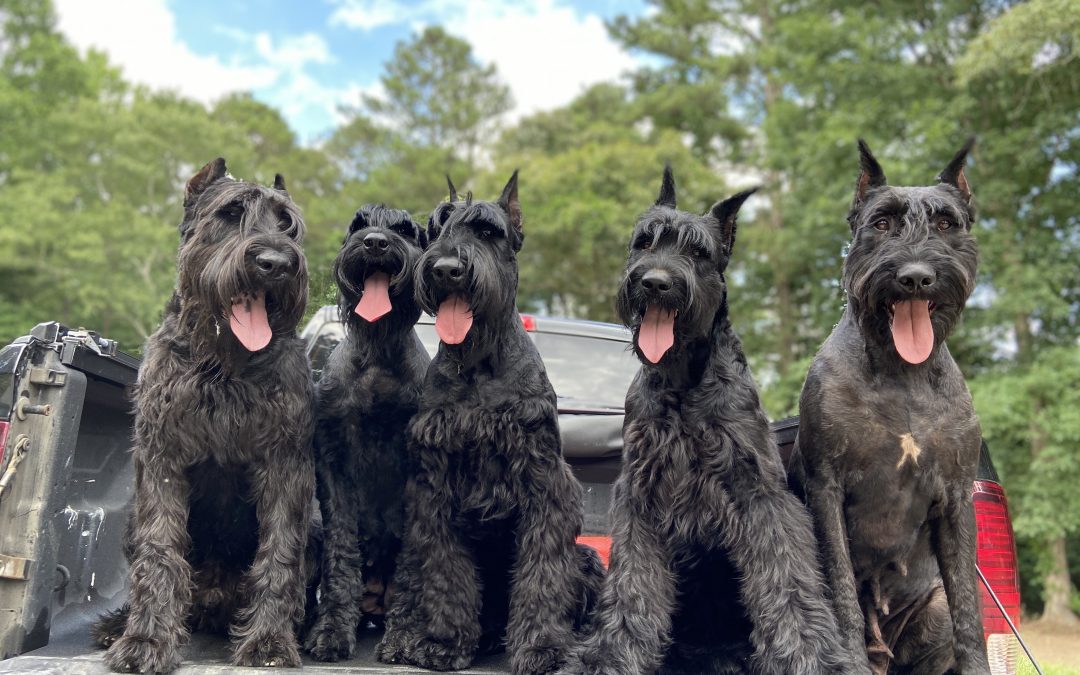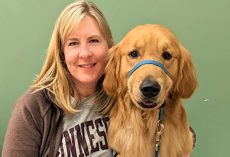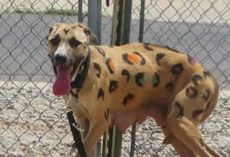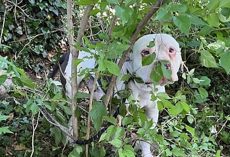The Giant Schnauzer is a remarkable dog breed that is well-known for its impressive size, intelligence, and versatility. They were originally bred in Germany in the late 1800s as working dog to herd cattle, guard property, and serve as military dog during World War I and II.
Today, they continue to serve in various roles, including show dogs, family pets, and service dogs. In this article, we will explore the many roles of the Giant Schnauzer, focusing specifically on their use as service dogs.
What is a Service Dog?
A service dog is a specially trained dog that is trained to perform specific tasks to assist an individual with a disability. These tasks can include alerting the person to sounds, guiding the person through public places, retrieving items, providing physical support, and more.
Service dogs can be trained to assist individuals with a wide range of disabilities, including physical disabilities, sensory disabilities, psychiatric disabilities, and more.
The process of training a service dog is extensive and can take up to two years. The dog must be trained to perform tasks specific to the individual’s disability, as well as general obedience and public access skills.
Service dogs are protected by the Americans with Disabilities Act (ADA) and are allowed to accompany their owners in public places, including restaurants, stores, and public transportation.
Giant Schnauzers as Service Dogs
Giant Schnauzers are an excellent breed for service work due to their intelligence, trainability, and loyalty. They are also known for their high energy and endurance, which make them well-suited for tasks that require physical exertion, such as guiding a person with a disability or assisting with mobility.
Additionally, their protective nature and natural guarding instincts make them an excellent choice for individuals with anxiety or PTSD.
There are a few organizations that specifically train Giant Schnauzers for service work, including New Horizons Service Dogs and Pawsitivity Service Dogs. These organizations provide extensive training for the dogs, as well as support for their owners.
Types of Service Work for Giant Schnauzers
Giant Schnauzers can be trained for a variety of service tasks, depending on the needs of the individual. Some of the most common types of service work for Giant Schnauzers include:
1. Guide Dogs
Giant Schnauzers can be trained to guide individuals with visual impairments, helping them navigate through public places safely.
2. Hearing Dogs
Giant Schnauzers can be trained to alert individuals with hearing impairments to sounds, such as doorbells, phones, and smoke alarms.
3. Mobility Assistance
Giant Schnauzers can be trained to assist individuals with mobility impairments by providing balance support, retrieving items, and opening doors.
4. Psychiatric Service Dogs
Giant Schnauzers can be trained to assist individuals with psychiatric disabilities, such as anxiety and PTSD, by providing emotional support and helping to calm them during stressful situations.
5. Medical Alert Dogs
Giant Schnauzers can be trained to detect changes in their owner’s body odor, alerting them to a potential medical emergency, such as a seizure or drop in blood sugar.
Training a Giant Schnauzer as a Service Dog
Training a Giant Schnauzer as a service dog is a significant undertaking that requires time, patience, and dedication. The training process typically takes up to two years and involves a combination of obedience training, task training, and public access training.
The first step in training a service dog is to choose a reputable trainer or organization that specializes in service dog training. The trainer will work with the owner to develop a training plan that is tailored to the individual’s needs and the dog’s abilities. During the training process, the dog will be taught a variety of tasks specific to the individual’s disability.
6. Therapy Dogs
Giant Schnauzers also excel in therapy work. Their intelligence, loyalty, and gentle nature make them ideal candidates for providing comfort to people in need.
Therapy dogs visit hospitals, nursing homes, schools, and other settings to help alleviate stress and provide emotional support.
Their presence alone can have a calming effect on patients, and they can also be trained to perform specific tasks such as providing tactile stimulation or aiding in physical therapy exercises.
7. Search and Rescue Dogs
Due to their athleticism and high level of trainability, Giant Schnauzers make excellent search and rescue dogs. They are often used in situations such as natural disasters or missing person searches, where their keen sense of smell and ability to navigate difficult terrain is crucial.
These dogs are trained to track scent trails, detect human remains, and perform other tasks that aid in locating and rescuing individuals.
8. Police and Military Dogs
Giant Schnauzers are also utilized as police and military dogs in many parts of the world. Their intelligence, loyalty, and physical abilities make them well-suited for these types of roles.
They can be trained in a variety of skills such as tracking, apprehension, and explosives detection. Additionally, their intimidating size and appearance can serve as a deterrent to criminals and adversaries.
9. Obedience and Agility Competitors
Giant Schnauzers are highly trainable and excel in obedience and agility competitions. These events test a dog’s ability to follow commands, navigate obstacles, and perform other tasks with precision and speed.
Giant Schnauzers are known for their high energy and enthusiasm, which can make them excellent competitors in these types of events.
Additionally, the mental and physical stimulation provided by these activities can help prevent boredom and promote overall well-being.
10. Companions and Family Pets
While Giant Schnauzers have a long history of serving as working dogs, they are also beloved family pets. Their affectionate and loyal nature makes them excellent companions, and they thrive on human interaction and attention.
They are well-suited for households with active lifestyles, as they require daily exercise and mental stimulation. Additionally, their protective instincts make them excellent watchdogs, and they will fiercely defend their family if needed.
Conclusion:
The Giant Schnauzer is a versatile and multi-talented breed, capable of excelling in a wide range of roles. From their origins as hardworking farm dogs to their present-day roles as service animals and beloved companions, these dogs have proven their worth time and time again.
Their intelligence, loyalty, and physical abilities make them ideal candidates for a variety of tasks, and their affectionate nature makes them wonderful family pets.
Whether you’re looking for a working dog, a therapy animal, or simply a faithful companion, the Giant Schnauzer is a breed worth considering.











